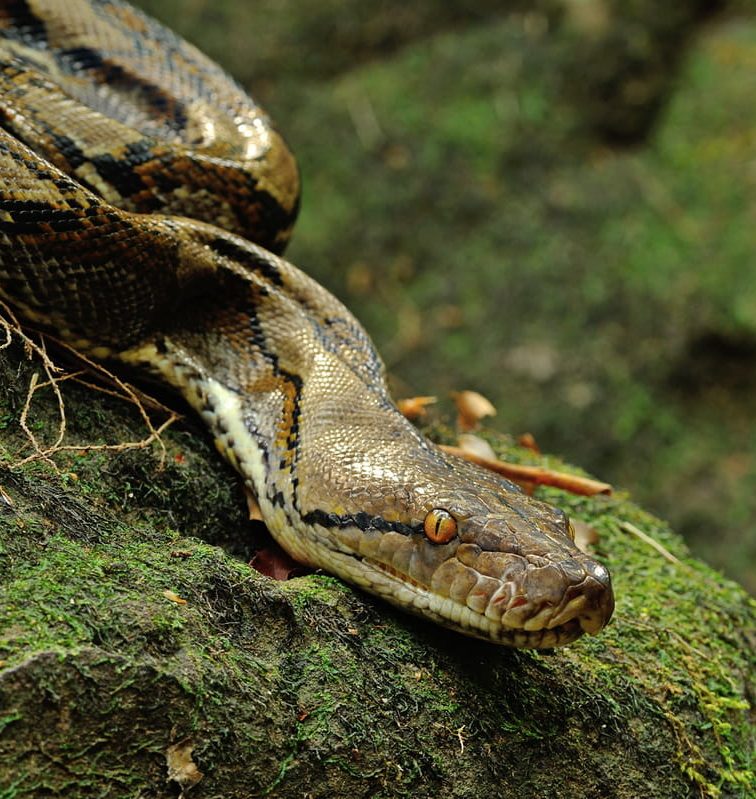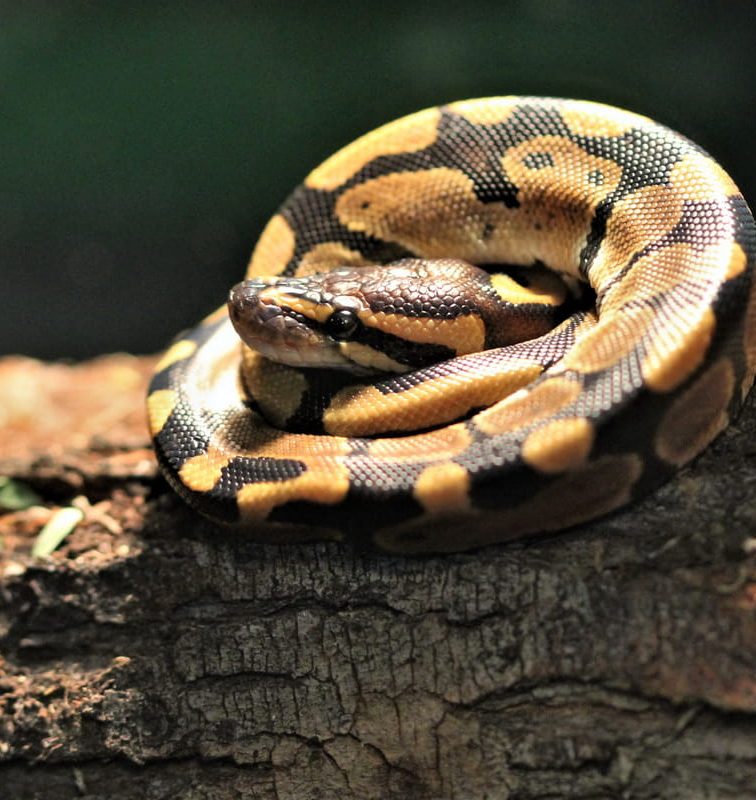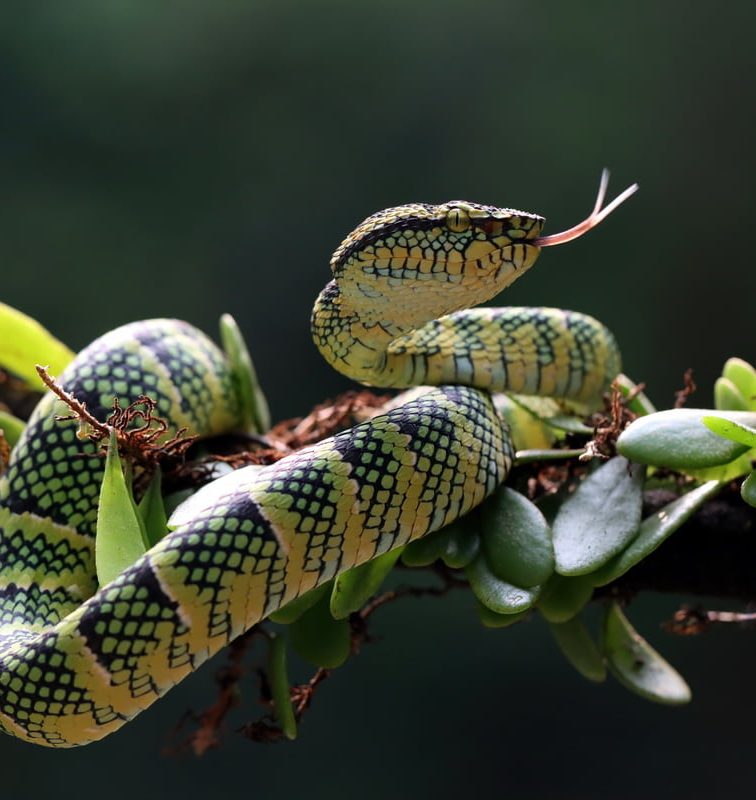Embark on an exploration of the Burmese python, a creature that combines grandeur, mystery, and ecological significance in its vast coils. Native to the grassy marshes of Southeast Asia, these serpents have been revered and feared throughout history.
In ancient times, they were symbols of earth’s primal forces, intertwined with the myths and legends of local cultures. Today, they draw the curiosity of scientists and wildlife enthusiasts alike, as they hold the title of one of the world’s largest snakes, with some recorded at lengths over 20 feet and weights nudging 200 pounds. Their journey from revered wild spectacles to Florida’s invasive predators marks a story of survival and adaptability.
As we unwrap these 15 fun facts, we’ll discover how the Burmese python has slithered its way through history, ecosystems, and the scientific community’s attention, revealing a species that is as fascinating as it is formidable.
1. Giant Among Giants: Burmese Pythons’ Astonishing Size
Burmese pythons, one of the earth’s largest snakes, challenge our understanding of the limits of reptilian growth. Record-breaking specimens have reached lengths of over 23 feet and weights surpassing 200 pounds, though the average is a still-impressive 16 feet and 140 pounds. This sheer size is functional; their muscular girth allows them to prey on animals as varied as birds and pigs, showcasing a fascinating adaptability in diet and hunting tactics.
Historically, these pythons were even worshipped in some Asian cultures for their size and strength, symbolizing power and wisdom. Today, they continue to inspire both awe and scientific inquiry, as researchers study their growth patterns to better understand reptilian biology and the impact they have on the ecosystems they dominate.

Image: assets.4cdn.hu
2. Habitat Hunters: From Southeast Asia to Florida
The Burmese python’s original home in Southeast Asia provided a warm, humid climate with plenty of water sources—ideal conditions for these reptiles. However, the trade in exotic pets has led to their establishment in Florida, where they’ve been an invasive species since the 1980s. Here, they’ve found similar conditions in the Everglades, allowing them to flourish.
The impact on Florida’s ecosystem has been profound. Studies show that in some regions of the Everglades, populations of small mammals have declined by more than 90% since the pythons’ arrival. It’s a striking example of how an animal found outside its native habitat can disrupt the balance of an existing ecosystem.
3. Lifespan Longevity: The Surprising Age of a Burmese Python
Burmese pythons are noted for their impressive longevity, with lifespans that can exceed two decades in the wild, and even longer in captivity. The oldest recorded Burmese python lived to an astonishing 28 years in captivity, far surpassing the lifespans of many wild mammals. This longevity is particularly notable considering the myriad threats they face, from habitat loss to hunting for their skin and meat.
Their long lives contribute significantly to their status as an invasive species. A single python can influence the ecosystem over many years, with females laying up to 100 eggs annually. Research data highlights the significance of this: with no natural predators in places like Florida, their populations can grow unchecked, presenting a formidable challenge to conservationists.
4. Invasive but Impressive: Burmese Pythons’ Impact on Ecosystems
The introduction of Burmese pythons to Florida has sparked significant concern due to their profound impact on the ecosystem. As apex predators, they have altered the ecological balance, drastically reducing populations of native species. In the Everglades, studies suggest mammalian populations have plummeted due to python predation. Their presence is a classic example of how an invasive species can wreak havoc when introduced to a new environment without natural checks and balances.
The ripple effect of their predation extends beyond direct impacts. As pythons prey on species like raccoons and opossums, which are natural controllers of pests, there is concern about increased pest populations and their associated diseases. This facet of their impact is an ongoing area of study for scientists monitoring the health of the Everglades.

Image: evergladessafaripark.com
5. Reproduction Revelations: The Prolific Nature of Burmese Pythons
Burmese pythons’ reproductive capabilities are both a marvel of nature and a cause for ecological concern. A single female can lay between 50 to 100 eggs per clutch, with the potential to reproduce annually. This prolific nature allows for rapid population growth, especially in environments like Florida where there are few constraints on their reproduction.
Historical data from their native Southeast Asia show that these pythons have been revered for their fertility, often associated with rain and fertility in local folklore. However, in non-native regions, their reproductive success contributes to their status as an invasive species, with significant research devoted to understanding and managing their population dynamics.
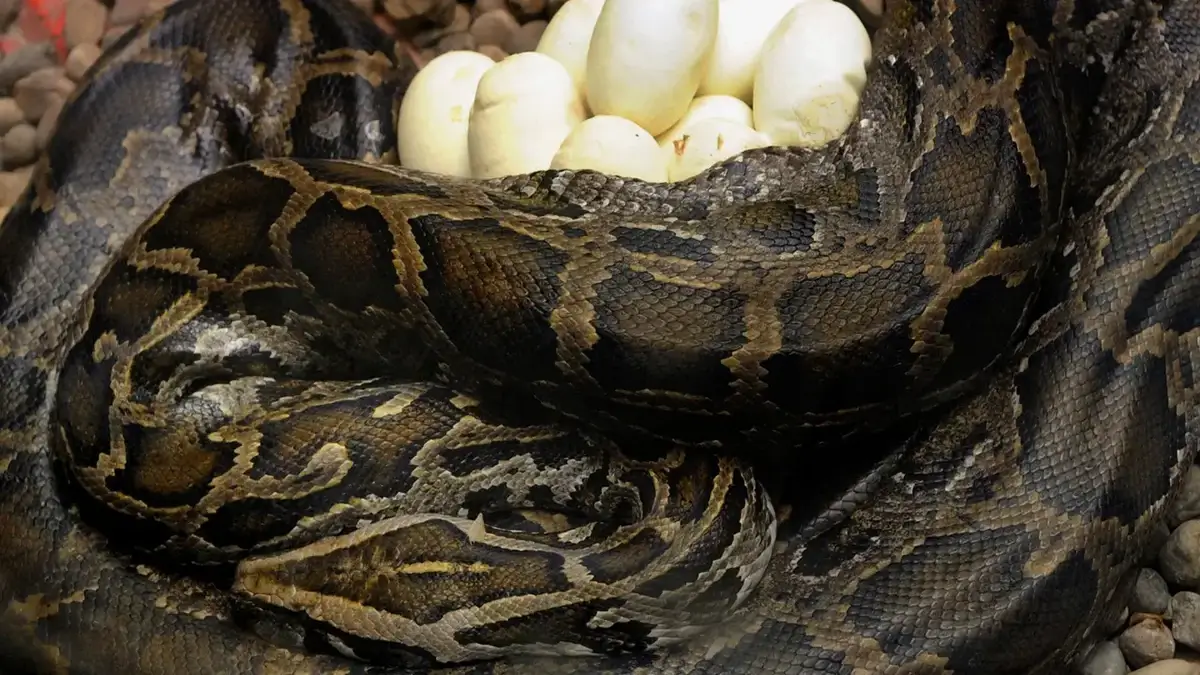
Image: svtstatic.se
6. Dietary Delights: The Varied Menu of Burmese Pythons
The Burmese python is an adaptable feeder, with a diet that encompasses a wide range of animals. In their native habitats, their prey includes small mammals, birds, and occasionally even small reptiles. This diet changes in places like Florida, where they’ve been known to consume everything from rodents to adult deer and alligators. Their ability to unhinge their jaws to swallow prey larger than their heads is a key to their survival as an invasive species.
Scientists have been fascinated by their dietary habits, as it sheds light on their impact on the food chain. Research in the Everglades has recorded a significant shift in prey populations, with implications for biodiversity and the health of the ecosystem.
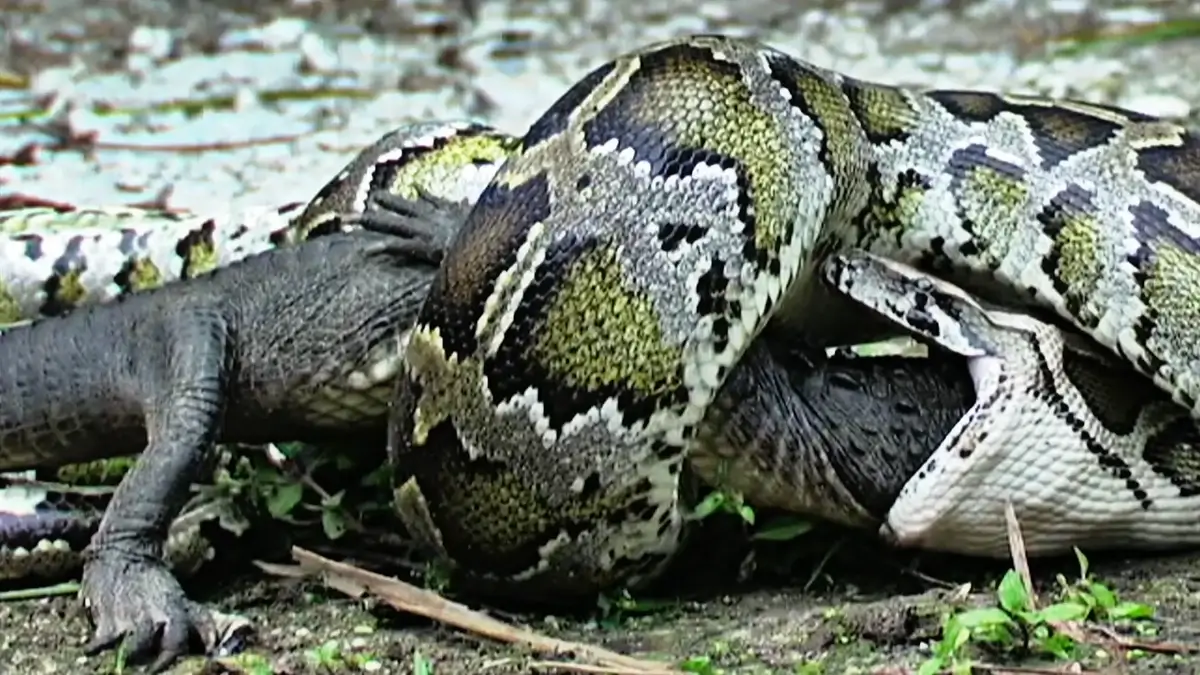
Image: roaring.earth
7. Adaptive Abilities: Burmese Pythons’ Survival Skills
Burmese pythons are the Houdinis of the reptile world; their capacity for survival is nothing short of remarkable. Adaptability is the name of the game for these snakes. For example, they can regulate their metabolism to suit available resources, a trait that allows them to thrive in diverse environments. Scientific data reveal that they can go without food for up to a year after a hefty meal due to their slow digestion.
Moreover, these reptiles have developed an incredible resistance to various pathogens, including those that are lethal to other species. Researchers have identified unique genetic sequences in Burmese pythons responsible for this resilience, offering potential insights into disease resistance that could benefit medical science.
8. Cold-Blooded Olympians: Speed and Strength of Burmese Pythons
The athletic prowess of Burmese pythons is astonishing. They may not be the fastest sprinters, but when it comes to strength, they are unparalleled. They exhibit extraordinary muscular power, particularly during constriction. A research study measured the constriction pressure of Burmese pythons to be over 12 pounds per square inch (psi), enough to ensure their grip on prey is unbreakable.
Their swimming capabilities are equally impressive. Burmese pythons can move swiftly in water, using a serpentine motion to propel themselves. This ability is critical for hunting in their native aquatic habitats and is a key factor in their successful colonization of Florida’s wetlands.

Image: nationalgeographic.com
9. Cultural Significance: Burmese Pythons in Mythology and Folklore
The Burmese python holds a prominent place in the cultural tapestry of Southeast Asia. It is often associated with strength, grace, and wisdom. In Vietnamese culture, the python is seen as a symbol of good fortune and longevity. Meanwhile, historical accounts from Myanmar (Burma) suggest that these snakes were once considered sacred and were protected by royal decree.
Their mystique is woven into numerous tales and legends, where they are both revered and feared. Stories depict them as guardians of treasures or as transformative beings with magical powers. This rich cultural reverence highlights the complex relationship between humans and these formidable creatures.
10. Conservation Concerns: The Threats to Burmese Pythons’ Survival
While Burmese pythons may be thriving in Florida, their status in their native range is less secure. Habitat destruction, particularly deforestation in Southeast Asia, poses a significant threat to their natural habitats. Additionally, they are hunted for their skin, used in fashion, and for their meat, considered a delicacy in some regions.
Conservation efforts are underway to protect these snakes. The Convention on International Trade in Endangered Species of Wild Fauna and Flora (CITES) has regulated their trade since 1975. Yet, the illegal wildlife trade continues to be a challenge. Conservationists are working tirelessly to combat these threats and ensure that Burmese pythons have a fighting chance for survival in their native lands.
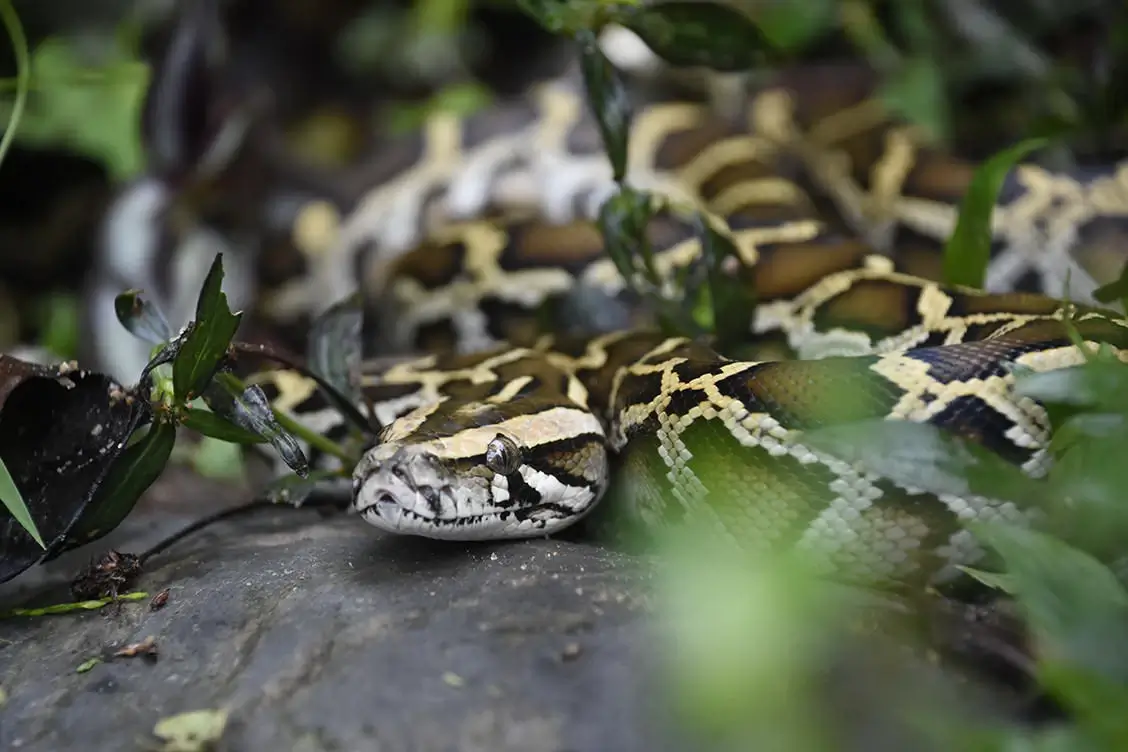
Image: kfbg.org
11. Sensing the World: Burmese Pythons’ Unique Sensory Capabilities
Burmese pythons possess an extraordinary array of sensory abilities that allow them to navigate and dominate their environment. Unlike humans, they are equipped with heat-sensing pits located along their jaws, which enable them to detect the infrared radiation from warm-blooded prey even in complete darkness. These pits are so sensitive that a python can detect a temperature change of just 0.003 °C, effectively giving them a sixth sense to locate prey.
Additionally, their tongues are constantly flicking to capture chemical particles in the air, which are then analyzed by the Jacobson’s organ in their mouths. This gives them a detailed “taste” of their surroundings, including the direction of potential prey or mates. Scientific studies have shown that this combination of thermal and chemical sensing makes them highly effective hunters.
12. Skin Secrets: The Shedding Process of Burmese Pythons
The skin of a Burmese python is a living record of its growth and health. These snakes shed their skin periodically in a process called ecdysis, which is essential for their growth and to remove parasites. Young pythons may shed every few weeks, while adults may do so several times a year. The entire process is a fascinating spectacle, beginning with the skin loosening and the snake rubbing against rough surfaces to peel it off.
This process also provides valuable information to biologists studying the health and growth rates of these snakes. The frequency and quality of the shed can indicate the python’s nutritional status and overall well-being. In captivity, where conditions are controlled, the shedding process is monitored closely as an indicator of health.
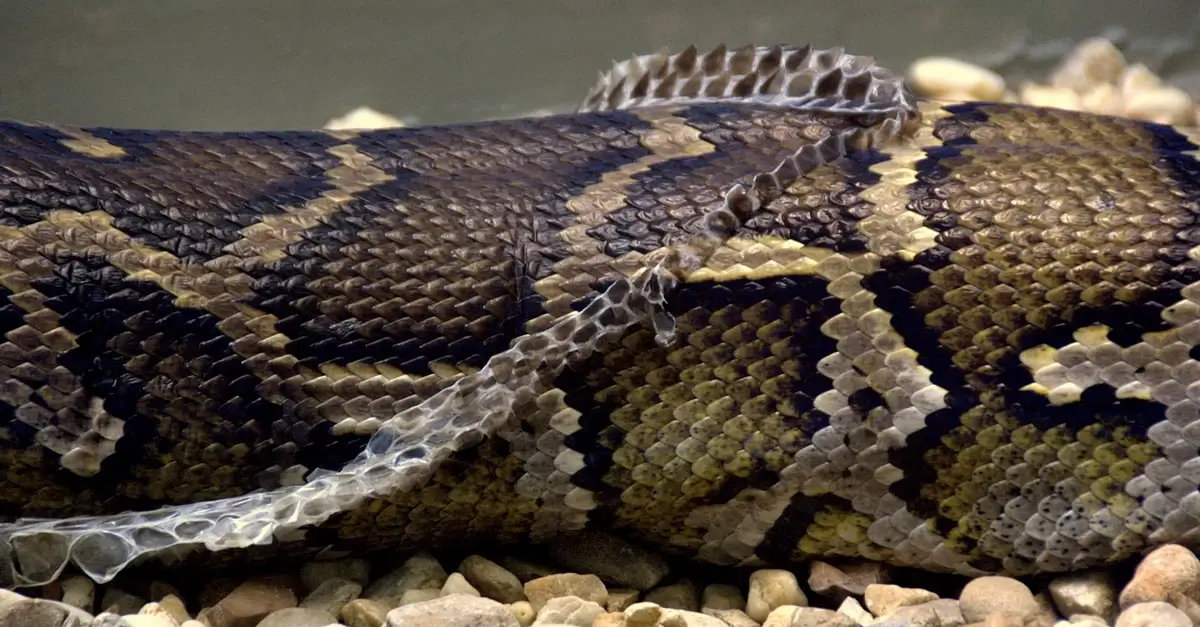
Scott Ableman / Flickr
13. Predator and Prey: The Role of Burmese Pythons in the Food Chain
Burmese pythons are apex predators in their native habitats, sitting at the top of the food chain. Their role is critical in controlling the populations of their prey, which includes a variety of mammals and birds. In the ecosystems where they naturally occur, they help maintain a balance by ensuring that no single species becomes too dominant.
However, in non-native environments like Florida’s Everglades, they become an invasive predator, disrupting the local food web. Their predation has significantly reduced the populations of several native species, which has a cascading effect on the ecosystem. Research continues to assess the full extent of their impact and to develop strategies to manage their populations.
14. Record Breakers: Notable Burmese Pythons in History
Throughout history, Burmese pythons have been record setters in the reptile world. One of the most famous was “Baby,” a python from Serpent Safari Park in Illinois, who was once considered the heaviest living snake in captivity, weighing in at a massive 403 pounds. Another notable individual was “Samantha,” who lived at the Bronx Zoo and was known for her extraordinary length of over 20 feet.
These individual stories of notable pythons are not just curiosities; they provide valuable data for herpetologists studying the species’ growth potential and health parameters. They also serve as ambassadors for their species, drawing public interest and raising awareness about reptile conservation.
15. The Mighty Clutch: Burmese Pythons’ Egg-Laying Marvel
Burmese pythons are oviparous, meaning they lay eggs rather than giving birth to live young. A female can lay a clutch of up to 100 eggs, which she will then guard diligently until they hatch. This maternal behavior is rare among snakes and underscores the python’s investment in the survival of its offspring.
During the incubation period, the female python can increase her body temperature through muscular contractions, effectively “shivering” to keep the eggs warm. This dedication ensures the eggs remain at the optimal temperature for development, even if the external environment is cooler. The survival rate of hatchlings is a subject of ongoing research, providing insights into the early life stages of this species.
FAQ
What Does a Burmese Python Eat?
Burmese pythons have a varied diet that adapts based on their environment and the availability of prey. In the wild, they primarily eat small to medium-sized mammals and birds. Larger pythons have been known to take down animals as big as pigs or goats, and in their invasive range in Florida, they’ve even preyed on alligators. They are ambush predators, waiting patiently before striking with remarkable speed, coiling around their prey and suffocating it.
What Makes a Burmese Python Unique?
Burmese pythons are unique due to their incredible size, distinctive color pattern, and their heat-sensing pits which allow them to detect prey in total darkness. Their adaptability to different environments, their ability to go months without eating after a big meal, and their swimming prowess also set them apart. Moreover, their reproductive strategy, where females lay a large number of eggs and exhibit maternal behavior, is distinctive among many snake species.
How Many Teeth Does a Burmese Python Have?
A Burmese python has between 40 and 50 backward-curving teeth. These teeth are not used for chewing but are designed to grip and hold their prey as they constrict. If a tooth is lost, it can be regrown, ensuring their mouth is always ready for their next meal.
Can a Burmese Python Swim?
Yes, Burmese pythons are excellent swimmers. They are semi-aquatic and can be found in or near bodies of water. They are known to swim both on the surface and fully submerged. Pythons can hold their breath for up to 30 minutes, allowing them to travel significant distances underwater or to hide from potential threats.
Are Burmese Pythons Deaf?
Burmese pythons do not have external ears and are deaf to airborne sounds. However, they can sense vibrations through the ground and water, which helps them detect the approach of prey or predators. This sensory adaptation allows them to be aware of their surroundings despite the absence of traditional hearing.
What Is the Rarest Burmese Python?
The rarest Burmese python would likely be one with an unusual color mutation, such as the leucistic or albino Burmese python. These pythons have a genetic mutation that affects their pigmentation, resulting in a white or yellowish color with patterns in different shades. Such color variants are rare in the wild but are bred for these unique traits in captivity.
What Animal Kills Burmese Pythons?
In their native habitat in Southeast Asia, adult Burmese pythons have few natural enemies due to their size. However, juveniles may fall prey to birds of prey, crocodiles, large cats, and other snakes. In Florida, alligators have been known to kill Burmese pythons, and there have been documented battles between the two species.
How Long Can a Burmese Python Live?
In the wild, Burmese pythons can live for about 20 years, but in captivity, with the absence of predators and regular veterinary care, they can live up to 25 years or more. The oldest recorded Burmese python in captivity lived to be 28 years old.
What Is the Longest Burmese Python Ever Caught?
The longest Burmese python ever caught was over 18 feet long. It was captured in Florida, where these snakes are an invasive species. There have been reports of larger snakes seen in the wild, but this is the longest one that has been documented and captured.
How Fast Can a Burmese Python Travel?
Burmese pythons are not particularly fast movers on land; they typically travel at about 1 mile per hour. They conserve energy by lying in wait for prey rather than actively pursuing it. However, they can move more quickly in water, which aids in their hunting and evasion tactics.






